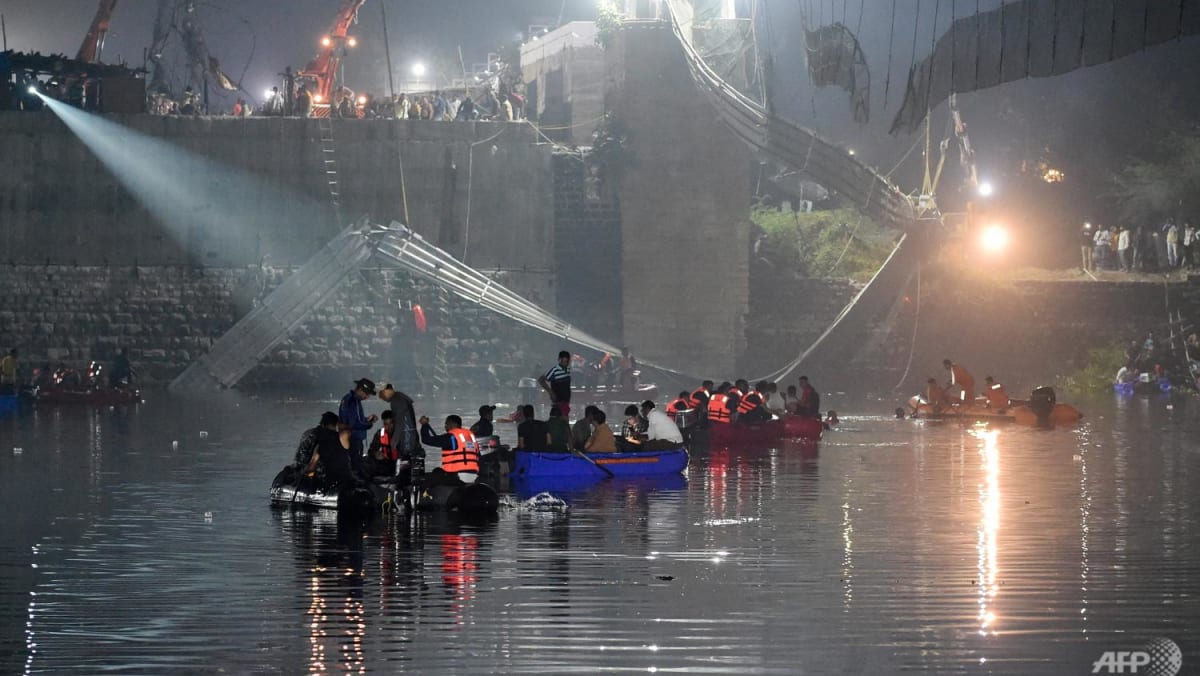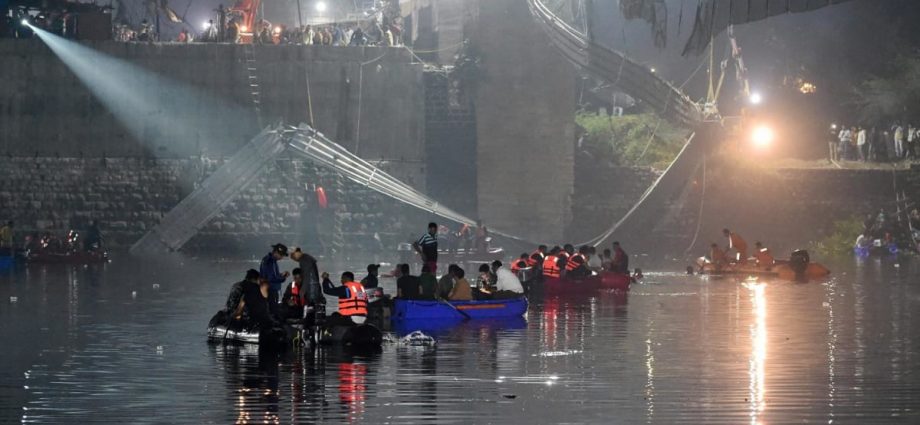
The suspension bridge, 233m long and 1.5m wide, was inaugurated in 1880 by the British colonial authorities and made with materials shipped from England, reports said.
Broadcaster NDTV reported that it reopened on Wednesday after seven months of repairs despite not having a safety certificate and that video footage from Saturday showed it swaying wildly.
Authorities quickly launched a rescue operation following the collapse, with boats and divers deployed to search for missing people late into the night.
Dozens of soldiers from the Indian Army and Navy were also called for the rescue operation.
Authorities were planning to stop the water supply to the river from the nearby check dam and use pumps to de-water the river to speed up the search operation.
Prime Minister Narendra Modi, who was touring his home state of Gujarat at the time, announced compensation for those killed and injured in the accident.
Modi “sought urgent mobilisation of teams for rescue (operations)”, his office tweeted.
“He has asked that the situation be closely and continuously monitored, and (for authorities to) extend all possible help to those affected.”
The Gujarat government on its official website describes the bridge as “an engineering marvel built at the turn of the century”.
Accidents from old and poorly maintained infrastructure including bridges are common in India.
In 2016 the collapse of a flyover onto a busy street in the eastern city of Kolkata killed at least 26 people.
In 2011 at least 32 people were killed when a bridge packed with festival crowds collapsed near the hill town of Darjeeling in India’s northeast.
Less than a week later around 30 people were killed when a footbridge over a river in the northeastern state of Arunachal Pradesh collapsed.
In 2006 at least 34 people were killed when a 150-year-old bridge collapsed on a passenger train in the railway station in the eastern state of Bihar.

